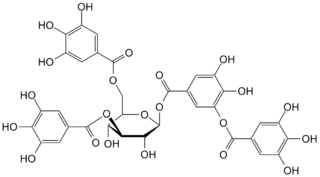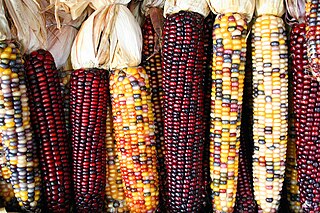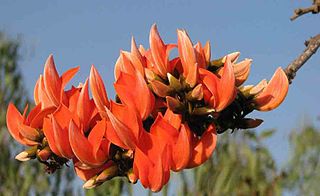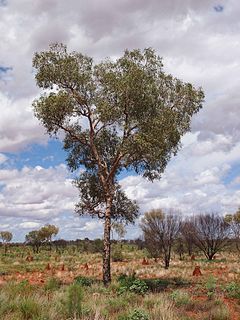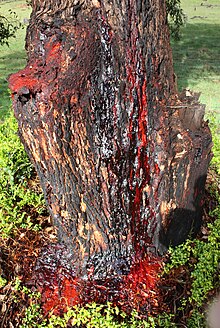
Kino is the name of the plant gum produced by various plants and trees, particularly Eucalyptus , in reaction to mechanical damage, [1] and which can be tapped by incisions made in the trunk or stalk. Its red colour, together with the tendency of some species to ooze large amounts of it from wounds, is the source of the common names "red gum" and "bloodwood". The word “kino” is of West African origin. [2]
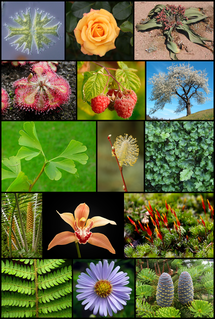
Plants are mainly multicellular, predominantly photosynthetic eukaryotes of the kingdom Plantae. Historically, plants were treated as one of two kingdoms including all living things that were not animals, and all algae and fungi were treated as plants. However, all current definitions of Plantae exclude the fungi and some algae, as well as the prokaryotes. By one definition, plants form the clade Viridiplantae, a group that includes the flowering plants, conifers and other gymnosperms, ferns and their allies, hornworts, liverworts, mosses and the green algae, but excludes the red and brown algae.

Natural gums are polysaccharides of natural origin, capable of causing a large increase in a solution’s viscosity, even at small concentrations. They are mostly botanical gums, found in the woody elements of plants or in seed coatings. They are used in the food industry as thickening agents, gelling agents, emulsifying agents, and stabilizers, and in other industries as adhesives, binding agents, crystal inhibitors, clarifying agents, encapsulating agents, flocculating agents, swelling agents, foam stabilizers, etc.

Eucalyptus is a genus of over seven hundred species of flowering trees, shrubs or mallees in the myrtle family, Myrtaceae commonly known as eucalypts. Plants in the genus Eucalyptus have bark that is smooth, fibrous or stringy, leaves with oil glands, and sepals and petals that are fused to form a "cap" or operculum over the stamens. The fruit is a woody capsule commonly referred to as a "gumnut". Australia is covered by 92,000,000 hectares of eucalypt forest, comprising three quarters of the area covered by native forest.
